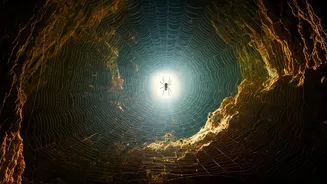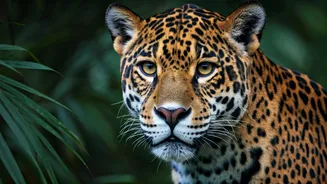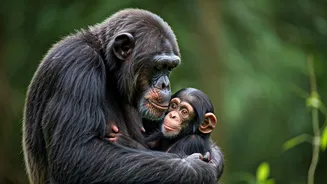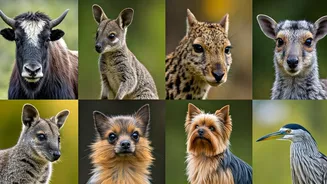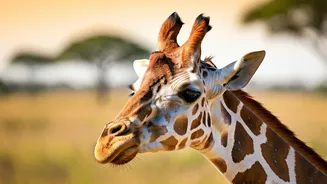The Half-Awake Dolphin
Dolphins offer a stunning example of unihemispheric sleep, an extraordinary ability that lets one half of their brain rest while the other remains active.
This unique characteristic is essential for their survival. While resting, a dolphin keeps one eye open, enabling it to constantly monitor its environment for predators or other potential threats. This constant awareness is vital, especially when navigating aquatic environments. It also allows dolphins to surface to breathe regularly. When one side of the brain is asleep, the other continues to control vital functions, like breathing and maintaining a level of situational awareness. By switching which hemisphere rests, dolphins can essentially stay awake and aware, ensuring their safety and survival in the ocean depths.
The Unblinking Snake
Snakes, unlike many other creatures, lack eyelids. Therefore, their eyes remain permanently open, even during sleep. While it might appear as if they are constantly awake and alert, they are actually resting. Snakes' eyes are protected by a transparent scale called a 'brille' that covers the eye. This functions similarly to an eyelid, shielding the eye from damage while allowing the snake to see. During sleep, snakes still retain some level of awareness of their surroundings. Their bodies may exhibit reduced responsiveness to external stimuli; but they maintain an essential level of alertness to detect the presence of danger. Thus, their constant gaze is not a sign of perpetual vigilance but a physiological adaptation allowing them to protect their eyes, while still achieving rest.
The Watchful Giraffe
Giraffes possess a distinctive sleep pattern, often characterized by short periods of rest. They are known to sleep standing up. Their height presents a unique challenge, making them vulnerable to predators. Therefore, giraffes must remain vigilant even when sleeping. They can close their eyes when they feel safe but typically remain partially alert by keeping their eyes open and their ears perked. This constant awareness is crucial for detecting potential threats. Giraffes can also lie down to sleep, which generally signals deeper sleep. When they are in this position, they tend to be in a safer environment and less concerned about predators. Even in this state, their large size and mobility give them a significant advantage in detecting and responding to danger.
The Cunning Crocodile
Crocodiles have the remarkable ability to sleep with one eye open. They use unihemispheric sleep, similar to dolphins, where one side of their brain rests while the other stays awake. This adaptation allows the crocodile to keep watch for predators or potential prey. The eye that is open continuously scans the surroundings, alerting the crocodile to any movement or change. The open eye also monitors environmental conditions, helping the crocodile maintain its body temperature. This constant vigilance is especially important when the crocodile is in water, where predators may be lurking. This ability to sleep with one eye open provides the crocodile with both protection and the opportunity to hunt. This demonstrates the survival strategies crocodiles have adopted.





